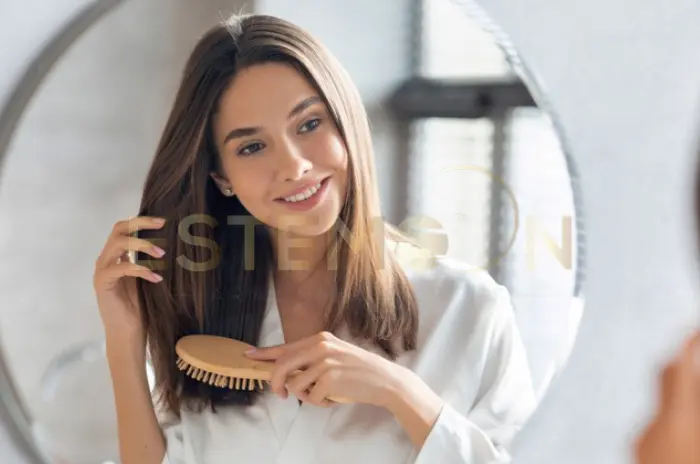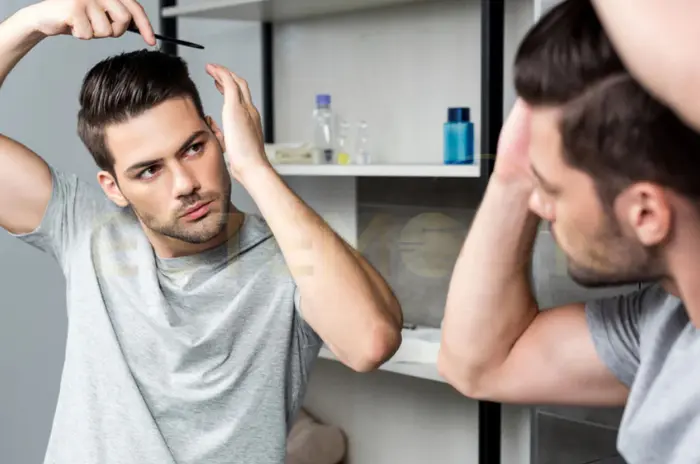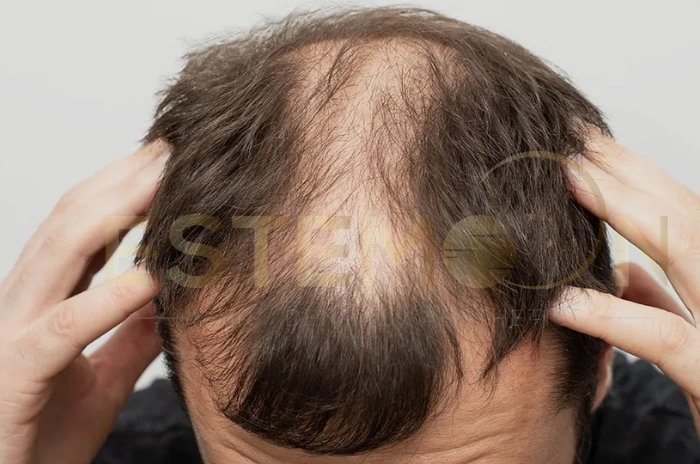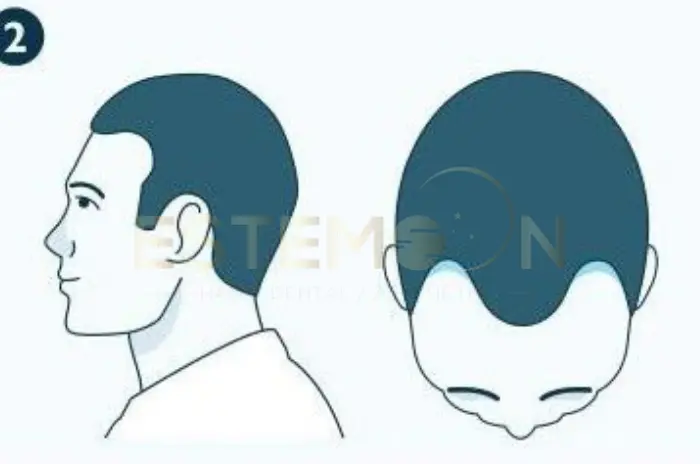Over the years, there have been countless myths about hair care that have been passed down through generations, shared on social media, and perpetuated in the beauty industry. While some of these myths may seem logical, many are completely unfounded and often lead to confusion or even damage. In this post, we’ll debunk some of the most common hair myths and provide the truth behind them so you can take better care of your hair.

Shampoo & Washing Myths
1. Myth: Washing Hair Every Day is a Must
One of the most common misconceptions about hair care is that you should wash your hair every day to keep it healthy. However, washing hair too frequently can strip it of its natural oils, leaving it dry and prone to damage.
Reality: Washing your hair every day isn’t necessary unless your scalp is extremely oily or you’re exposed to heavy pollutants. For most hair types, washing two to three times a week is sufficient to maintain healthy hair. Over-washing can cause your scalp to produce more oil to compensate, leading to a cycle of dryness and oiliness.
2. Myth: Shampooing Your Hair with Hot Water is Fine
Hot water feels great on a cold morning, but when it comes to washing your hair, hot water can cause more harm than good.
Reality: Hot water can strip your hair and scalp of natural oils, causing dryness and irritation. Instead, use lukewarm water to wash your hair, and finish with a cool rinse to help seal the hair cuticle and add shine.
3. Myth: You Should Only Use Shampoo and Skip Conditioner
Some people think conditioner is unnecessary, especially if they have oily hair, but conditioner plays an essential role in maintaining hair health.
Reality: Conditioner helps to hydrate, detangle, and smooth the hair, preventing breakage. It’s especially important if you have dry, damaged, or colored hair. Skipping conditioner can lead to brittle, lifeless hair, even if your scalp is oily.
| Myth | Reality |
|---|---|
| Wash hair every day | Washing 2-3 times a week is enough for most hair types. |
| Shampoo with hot water | Use lukewarm water to avoid stripping natural oils. |
| Skip conditioner for oily hair | Conditioner helps hydrate and smooth the hair. |
Styling & Damage Myths
1. Myth: Heat Styling Causes Immediate Hair Damage
It’s common to hear that heat styling tools like flat irons and curling irons cause irreversible damage to hair, but this isn’t always true.
Reality: While frequent and excessive use of heat styling tools can damage hair, occasional use with proper heat protection can minimize the risk. Always apply a heat protectant before styling, and use the lowest heat setting necessary to achieve your desired style.
2. Myth: The More Product You Use, The Better the Result
Many people think that using more hair products will give better results, whether it’s for volume, shine, or frizz control.
Reality: Using too many products can weigh hair down and cause product buildup, leading to dull, greasy hair. Less is often more when it comes to hair care. Focus on using the right products for your hair type and needs.
3. Myth: Brushing Wet Hair is Bad for It
There’s a widespread belief that brushing wet hair causes more breakage and damage.
Reality: While hair is more fragile when wet, gentle brushing or combing can prevent tangles and minimize breakage. Use a wide-tooth comb or a brush specifically designed for wet hair to avoid damaging your strands.

Hair Growth & Thickness Myths
1. Myth: Cutting Your Hair Makes It Grow Faster
One of the most pervasive myths in hair care is that cutting your hair regularly makes it grow faster.
Reality: Hair growth occurs from the scalp, not the ends. While trimming your hair every 6–8 weeks is essential for maintaining healthy, split-free strands, it does not affect the rate of hair growth. Cutting your hair helps it look fuller and healthier, but it doesn’t speed up growth.
2. Myth: Hair Can Grow Thick with the Right Products
Many people believe that applying products can make their hair thicker, but this is not always the case.
Reality: While some products can help make hair appear fuller, hair thickness is primarily determined by genetics. If you’re dealing with thinning hair, it’s best to address the underlying causes (such as nutrition, hormones, or scalp health) rather than relying solely on topical products.
3. Myth: Hair Grows Faster with More Shampoo
Some believe that the more shampoo you use, the faster your hair will grow, but shampoo’s main role is to clean, not stimulate growth.
Reality: Shampoo can cleanse the scalp of dirt, oil, and buildup, which can help maintain a healthy environment for hair growth. However, it has no direct impact on the rate at which hair grows. To promote hair growth, ensure you’re following a healthy diet, managing stress, and taking care of your scalp.
Myths About Hair Loss and Baldness
1. Myth: Hair Loss is Inevitable as You Age
Many people assume that hair loss is a natural part of aging and nothing can be done about it.
Reality: While some hair thinning is common with age, it isn’t inevitable for everyone. Hair loss can be caused by various factors, including genetics, hormonal imbalances, poor diet, stress, and certain medications. Addressing these underlying causes can help slow down or even reverse some forms of hair loss.
2. Myth: Wearing Hats Can Cause Baldness
A common myth is that wearing hats frequently can cause hair loss by restricting blood flow to the scalp.
Reality: There’s no scientific evidence to support the claim that wearing hats causes hair loss. However, wearing hats that are too tight can lead to a condition called traction alopecia, which can cause hair thinning around the hairline. Always choose hats that fit comfortably and don’t cause tension on your scalp.
3. Myth: Male Pattern Baldness Only Affects Men
While male pattern baldness is most commonly associated with men, women can also experience similar types of hair loss.
Reality: Female pattern baldness is a real condition that can affect women, especially after menopause. It typically involves a diffuse thinning across the scalp, particularly around the crown, and may be triggered by hormonal changes or genetics.
Hair Care Product Myths
1. Myth: Expensive Products are Always Better
Many believe that high-priced hair products are more effective than their budget-friendly counterparts.
Reality: The price of a product doesn’t necessarily correlate with its effectiveness. While some expensive products contain high-quality ingredients, there are also affordable products that deliver excellent results. It’s more important to choose products based on your hair type and needs.
2. Myth: Natural Products Are Always Safer
Natural or organic products are often considered safer and better for hair, but that’s not always true.
Reality: Natural ingredients can be just as harmful as synthetic ones, depending on how they’re used. For example, some essential oils can irritate the scalp if not diluted properly. Always ensure that natural products are right for your hair and that you aren’t allergic to any of the ingredients.
| Myth | Reality |
|---|---|
| Expensive products are always better | Price does not determine effectiveness; choose based on your hair type. |
| Natural products are always safer | Some natural ingredients can be irritating; use with caution. |
FAQ
Does cutting hair make it grow faster?
No, cutting hair does not make it grow faster. Hair grows from the scalp, not the ends. Regular trims help prevent split ends and keep hair looking healthy, but they don’t affect the rate of growth.
Can I repair my split ends?
Unfortunately, split ends can’t be permanently repaired. However, regular trims will help get rid of them. Using nourishing products can also help prevent future split ends.
Should I wash my hair every day?
No, washing your hair every day can strip it of its natural oils. For most hair types, washing two to three times a week is sufficient to keep hair clean and healthy.
Is air drying better for your hair?
Air drying is gentler on the hair than heat styling, but it can take longer. If you choose to air dry, avoid touching your hair too much to minimize frizz. However, always use a heat protectant when using heat styling tools.
Follow us on social media for updates, tips, and patient success stories:




